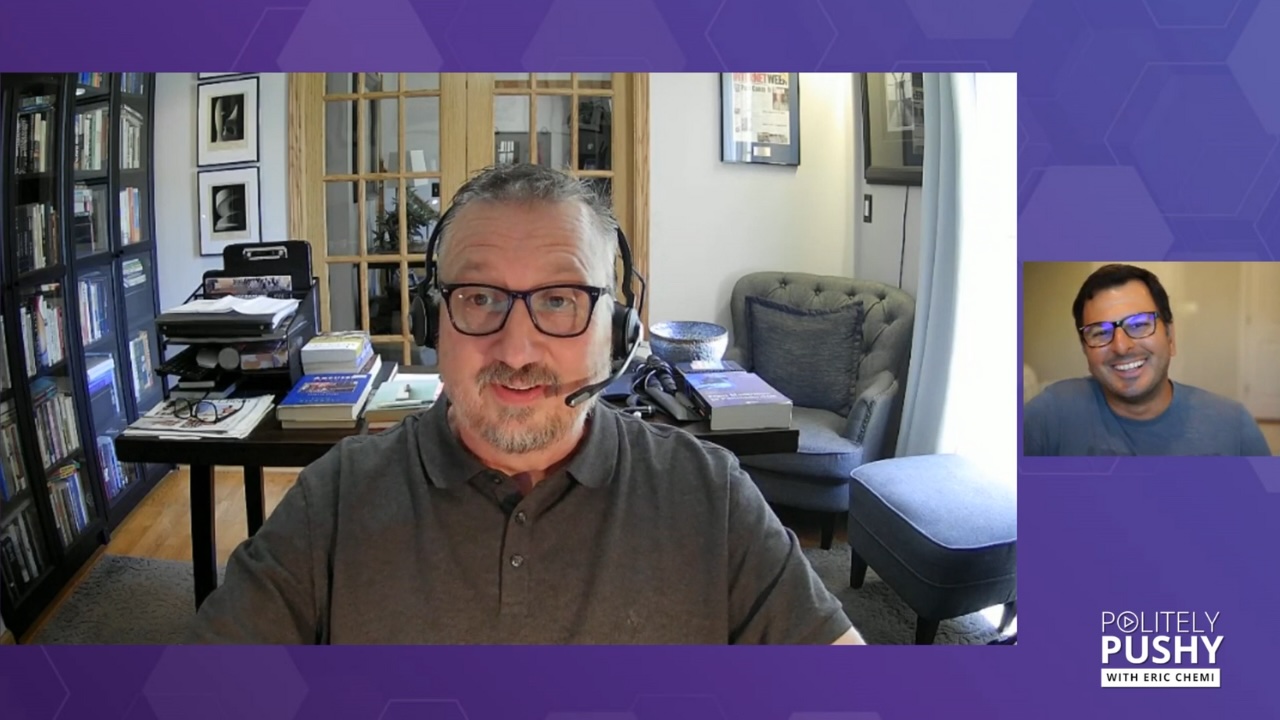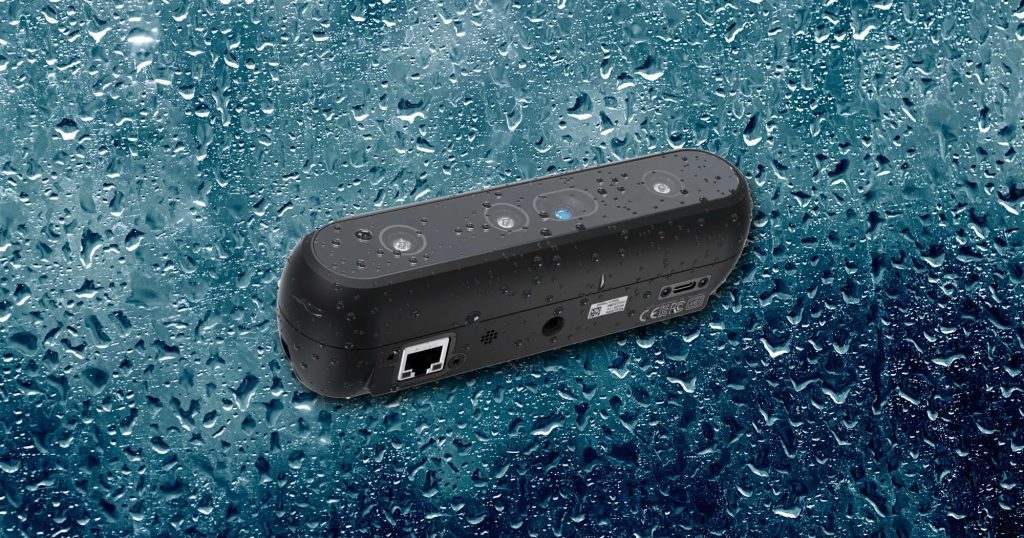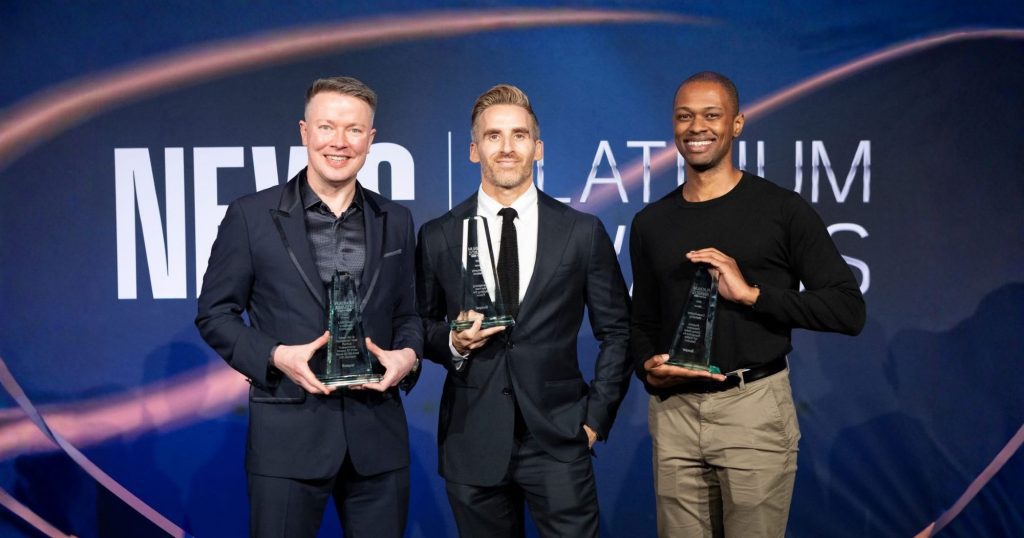In today’s complicated world in which businesses must understand the market landscape and negotiate an array of ever-changing conditions, want to discern technology hype from reality and seek third-party validation, industry analysts can play a valuable role. But analyst approaches vary widely, and many companies are curious or confused about how analysts work.
As a public relations agency, Bospar knows this firsthand because many of our current and prospective PR customers want to know more about analysts and analyst relations (AR).
To shed light on how some analysts operate and better understand what businesses care about today, Bospar’s Politely Pushy Podcast interviewed Rich Karpinski, principal analyst and head of the internet of things (IoT) at 451 Research, a division of S&P Global Market Intelligence.
In this interview with Bospar’s Eric Chemi, veteran industry analyst Karpinski:
- Revisits his move from reporter to analyst
- Sheds light on the AR “black box”
- Reveals the top questions customers and prospects are asking
- Talks about data centers’ impact on the global economy
- Analyzes the role of professionals in his field in the age of AI
- Identifies where IoT opportunities exist today
- Shares what executives are most concerned about right now
- Explains why analysts – and connecting with them – are more important than ever
Here are some of the key segments from our conversation.
Before working as an analyst, you were a tech reporter. You mentioned that in many ways these two roles are just different sides of the same coin. What did you mean by that?
Karpinski: The biggest change was on the first day, I had to go tell these companies that I used to get information from what they should be thinking. If you want to talk about imposter syndrome on day one, that’s a big thing. Suddenly, you’re the expert telling them what they should be thinking. But I’ve been doing this for a dozen plus years now, probably more.
But even journalists today have to feel, look and work a little bit more like analysts. They’re not so much reporters because all that information is out there. It’s a different role. You’re not a journalist or reporter, you’re an analyst in some way, shape or form. When we go to trade shows, we see publishing peers who are in the same role, they just execute it in a different way.
As an analyst, it’s a lot of fun to be able to have these two-way conversations with vendors, help them as much as they us and be more of a peer. I think that’s the biggest difference.
For many people, the analyst game is a real black box. Bospar clients and prospects have asked us such AR-related questions as “How do I get coverage?” “Is it pay to play?” “How can I get traction with analysts?” Can you please help illuminate how it works?
Karpinski: There are different sorts of analyst firms and relationships. What we tend to do here at 451 is try to have really close relationships with clients — paying clients, quite frankly.
We’re not an influencer shop. We’re not a pay-for-play shop. We’re very close to our clients and our prospects in terms of getting to know them, helping them out with what they’re doing, being an extension of their firm – whether it’s for strategy, go to market, sales enablement, etc.
A larger vendor is going to have an experienced AR staff. Many of them will have come from the analyst world, so they know the game inside and out. They’ll have various ways of working with us. Sometimes they’re more tied to a competitive intelligence group, and that competitive intelligence group is looking for data and information, and so they’re front-ending into our analyst insights. Other times, they’re fronting business units, whether they’re sales or marketing or product or whatever. Those groups need some help from the outside, whether they want survey data or market forecast data or help in telling a story to the market and their customers.
The way we position ourselves with our clients – and this is even more so since we became part of S&P, which has parts of our business that are regulated – we’re very strict around being independent. We’re trying to tell an independent, unbiased story to the market.
What’s the number one question that you’re getting right now from clients and prospects?
Karpinski: Everything is AI, right? So people are asking: “What’s the infrastructure necessary to support AI?” “How does AI impact the way our customers, as vendors, do their business?” “How does it impact our service models, service delivery and business models?”
At the end of the day, we’re an infrastructure analyst firm, so we’re looking at digital infrastructure. So, the biggest questions for us are about what tomorrow’s data centers are going to look like; how those workloads are going to be distributed between the cloud, the edge and the very near edge on-site; and within an industrial enterprise, what that edge will look like.
You’re constantly surveying the market. What statistic or trend have most surprised you?
Karpinski: I worked at Yankee Group before it was acquired by 451. Yankee Group was big into mobility and networks and such. They were very much a cloud and data center firm.
At one of the first 451 events I went to, I was sitting there with a data center crowd. They started talking about power and cooling, and I was thinking: What does this have to do with IT?
It just was foreign to me that they’d be concerned about these topics. But that’s what data centers are largely about. They’re about the power to run them and keep them running.
The massive impact that these data centers are having on the entire global economy and the energy sector is surprising. I recently saw a stat that data centers could consume, very shortly, all of the current energy generated. Of course, we would be generating more energy and power to keep up with the pace. But that’s how consumptive these data centers and capabilities are.
AI and the data centers to support them are basically swallowing everything – so that’s the thing to be watching and to understand what it means for everything else.
We talked a bit about AI in terms of what your clients are doing and thinking about. But how is AI impacting how industry analysts work and how companies now view analyst services?
Karpinski: I work with a lot of industrial firms that help companies run manufacturing plants. They bring in AI, but they don’t want to replace operators – the people who run plants and assembly lines. They want to augment them. This idea of human in the loop is talked about all the time. There’s all this expertise and capability within that human workforce.
It’s the same around analyst work. You can augment it, but it’s still extraordinarily necessary to have a human in the loop of this equation. There are various reasons why. LLMs tend to hallucinate. They’re only as smart as the data they’re trained on, which means they’ve got a training base, but also the data you share with them. To have that human in the loop, you have a point of view that you’re generating from talking to all these companies, and that’s still a human process. Maybe at some point, an AI agent could have all these conversations, although it probably wouldn’t be as fun for any of us if it was just machines talking to machines. But today we still go out, talk to people within these companies, and we bring that back in and drive all of our analysis based on that broader discerning view of what’s important and what’s not.
We’re also dealing with humans on the other side. Our customers are humans, so it’s good to have relationships, understand what their needs are and where they’re coming from.
You lead an IoT practice. IoT-enabled smart cities have been hyped for years, yet it doesn’t seem like much is happening there anymore. Why not, and where is IoT adding vale?
Karpinski: There was definitely a lot of hype, a lot of interest in smart cities. But it’s pulled back. There are funding challenges and long procurement cycles. Often, cities are not the most adept technology enterprises. Plus, they’ve got a lot on their plate these days other than smart tech.
That said, there are some interesting opportunities in other vertical areas.
When IoT is tied to revenue, that’s where the investment flows. Industrial, transportation and energy are among the areas where IoT is really making a bigger impact these days.
You speak with a lot of companies. What are executives most worried about right now?
Karpinski: For the customers of technology vendors, there are a couple of different things.
We do a lot of work in the industrial sector. That sector has an aging out workforce. A lot of the expertise is going away. It’s harder to hire technically capable college grads into manufacturing when they all want to go into software, AI and quantum. There’s real concern in bread-and-butter industrial sectors about workforce sunsetting and how to replace those capabilities. Now here comes AI ready to say we’ll take it over, right. We’ll capture all of that knowledge, and we’ll build agents, and we’ll replace them. But it’s not really that simple.
In enterprise IT, it’s really about managing infrastructure: What is that infrastructure going to look like? Where is it going to sit? What is it going to be? Do you need to have some massive edge presence to have high performance for robotics or something that’s really low latency? Or can you push it all to the cloud, as we’ve been doing? And, as you do that, how do you modernize your applications? When and how do you modernize them? And then AI swoops in, and you have to recalculate everything you were planning to do.
There’s sort of two different worlds. Some are just very practical, physical things – like people retiring or dealing with power requirements in the smart grid. Then the other world is: How is digital infrastructure going to evolve, and what does that mean for how you build, lease or use software as a service or other models? It’s a complicated thing, if you’re a CIO these days, to figure out exactly where you need to be ahead of the puck five to 10 years down the line.
If you’re an executive, it can be a real challenge to figure out whether to invest in what has made the company money in the past – which the organization knows works but may be shrinking – or whether to divert resources into something new and unproven instead.
Karpinski: Absolutely.
You can see it in certain businesses like retail. It’s been a catastrophe if you’ve been in brick-and-mortar retail the past decade. Now you might be out the other end, and the industry looks completely different than it did. But that’s a great warning of what happens when a sector becomes completely altered, you have to deal with today’s infrastructure and today’s customer while looking out ahead. And you’ve got Amazon coming in and changing everything with a different business model right under your feet. That happens again and again these days.
You have to be somewhat discerning – and this gets back to why analysts are important. You have to discern fad from reality. You have to put a business front and focus in looking at technology. You can’t deploy technology for the sake of it. You have to watch out for hype.
That hasn’t changed, it’s just become much, much more complicated.
Want to learn more about how analysts work, and what they are thinking and talking about?
- Check out our Politely Pushy Podcast with Bospar’s internal AR team.
- Look for our upcoming podcast with Gard Little, former IDC research vice president, and Bospar’s ownAlex Soejarto,a former Gartner vice president of research.
- Watch for our podcast with work, talent, learning and HR technology analyst Josh Bersin




